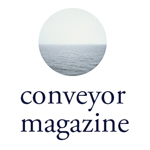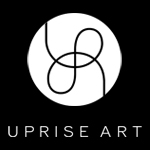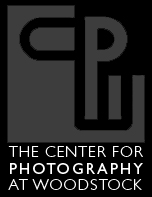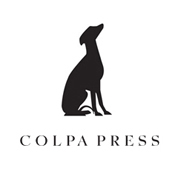Wanderlust Presents: Heidi Norton
Hello Heidi Norton,
Blending the lines of photography, installation, and sculpture, Heidi Norton’s methodology for image making is in a constant state of organic flux. Integrating live plants, wax, wood, and other objects, her process is informed by the questions and conundrums of Modernism. In particular, is Heidi’s own visual investigation into notions of idyllic beauty and how to redefine it.
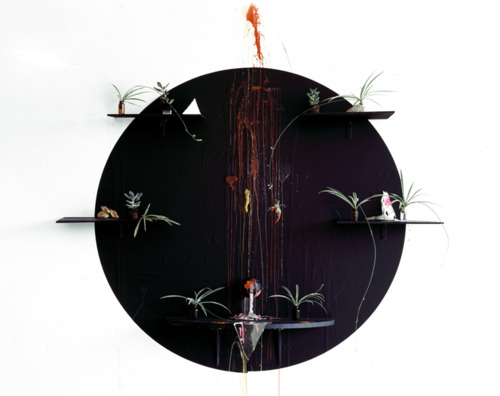 Channeling (Baby Spider Plants), 2010 archival pigment print, from the series Not to see the sun
Channeling (Baby Spider Plants), 2010 archival pigment print, from the series Not to see the sun
Informed by an unconventional upbringing in rural West Virginia; Heidi and her sister were the children of avant garde, bee keeper parents, who embraced an alternative style of rural homesteading. They were living off the grid before it could be culturally defined as doing so.
In memoriam to such a dinifitive history, the series New Age Still Life (2009-present), is a selection of house plants, seashells, glass jars, books, and mirror shards photographed as still lifes, or constructed as so.
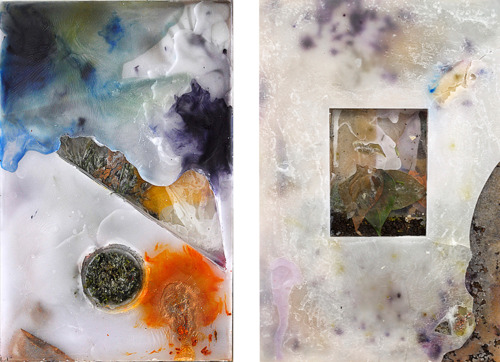 Moss Hole, 2011 wax and mixed media
Moss Hole, 2011 wax and mixed media
Each and every object is selected for its formal, as well as personal qualities. Through the application of both preservation and deconstruction of these plants and organic objects, the images are created as both 2D and 3D life forms. Eventually the plants will complete their lifespan, growing, withering, and shedding the acrylic paint or wax, to deconstruct and be reborn again.

Deconstructed (Rebirth), 2009 archival pigment print
The paint encapsulates and preserves, but it also stifles the plants, thus the organic forms oscillate somewhere between life and death. Through the science and mechanics of photography, as well as the use of color, geometry, and art history, Heidi has redefined the definition of the still life.
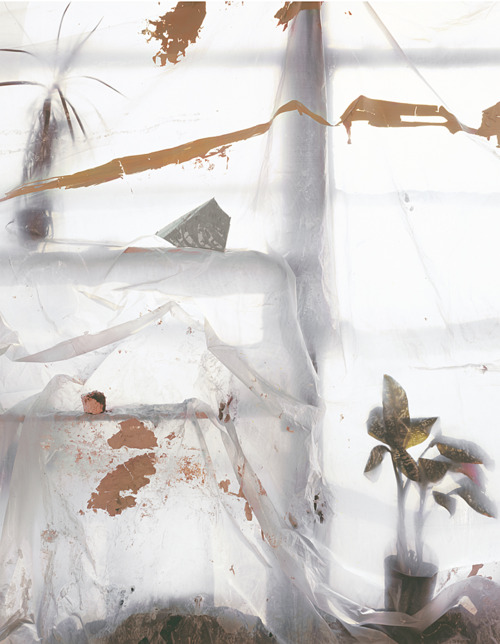 My Dieffenbachia Plant with Tarp (Protection), 2011 archival pigment print
My Dieffenbachia Plant with Tarp (Protection), 2011 archival pigment print
 Installation shot, 2011 from the series Not to see the sun
Installation shot, 2011 from the series Not to see the sun
There is an inherent tension in place with each of Heidi’s images and sculptures. Evoking the delicate relationship between humans and nature, like basic biology, we must destroy something in order to rediscover its potential.
“I’m trying to embrace that idea of flux and decay. I’m also interested in how the sculpture changes—like in color, the leaves turning from bright green to yellow or pink to brown” over time.
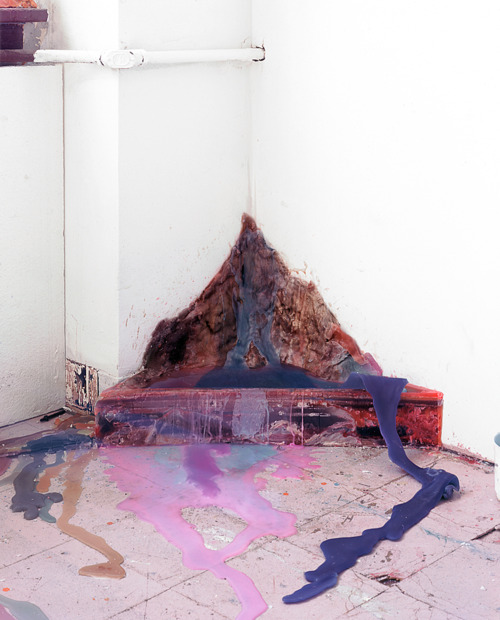 Wax Corner, 2011 archival pigment print
Wax Corner, 2011 archival pigment print
 Circle Template for Glass Sculpture, 2011 archival pigment print
Circle Template for Glass Sculpture, 2011 archival pigment print
Fossilized in time, yet precariously non archival, each image is its own ecosphere of histories. Heidi’s primitive, imaginative, and keen process to the reappropriation of photography and its dimensionality, is visually engrossing as a both a tactile image and disintegrating life form. She’s a visual Bee Charmer.
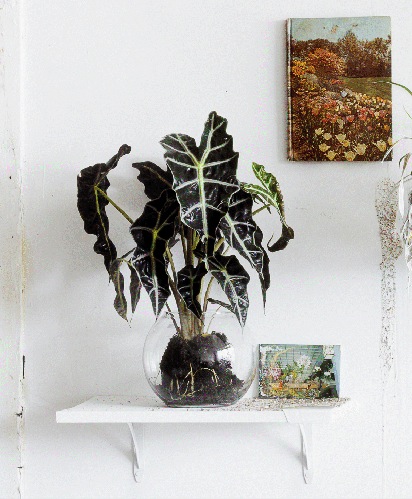 Elephant Ear Prize Orchid, 2011archival pigment print
Elephant Ear Prize Orchid, 2011archival pigment print
Heidi received her MFA from the School of the Art Institute of Chicago. Her work has been exhibited at the Contemporary Art Museum in Baltimore, Los Angeles, London, Spain, and the Knitting Factory in NYC. Her first solo show, Not To See The Sun, 2011 in Chicago was wildly praised.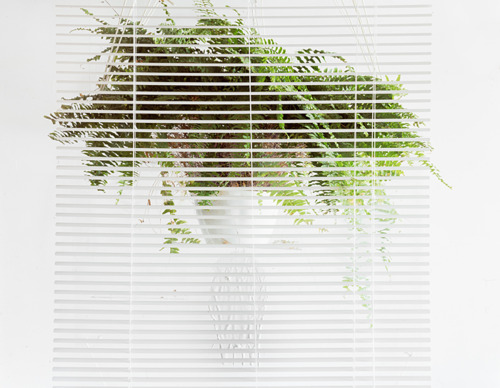 Untitled, 2010
Untitled, 2010
To see more of Heidi Norton go here: { www.heidi-norton.com }
30 Apr 2012 / 3 notes / Wanderlust Aubrey Hays Heidi Norton
Wanderlust Presents: Thomas Jackson
Hello Thomas Jackson,
Each October we use to all gather for the migratory anomaly of the Chimney Swifts. Just before sunset, several thousand of swifts would suddenly flood the sky. Pulsing in waves of shifting patterns, the seemingly choreographed display would end with a spiral plunge down an old brick chimney to roost till dawn.
Thomas Jackson’s series Emergent Behavior illustrates, yet also challenges this self-organizing phenomena, known as “emergence.” It arises out of the natural patterns and multiplicity of our environment. The slightest gesture, such as the flocks of birds, inherently create a predisposed order. In duality with such order, is natures desire for chaos, to which Thomas invites.
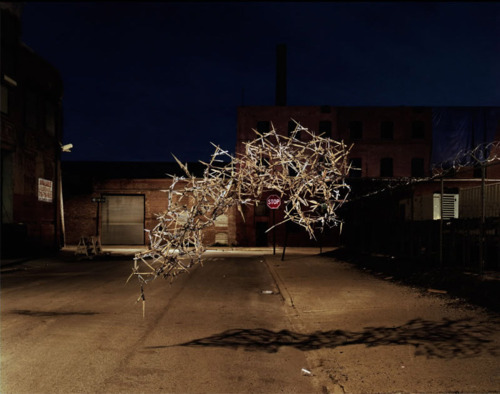 Broken Pallet, 2011 from the series Emergent Behavior
Broken Pallet, 2011 from the series Emergent Behavior
With the use of unlikely materials behaving in seemingly natural ways, the barriers of fact and fiction, play off an allegorical interpretation of the truth.
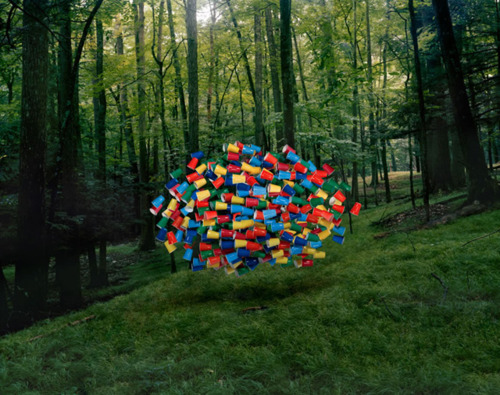 Cups 2011 from the series Emergent Behavior
Cups 2011 from the series Emergent Behavior
Precariously constructed by hand, Thomas uses wire, cups, sticks, and leaves, to suspend these sculptures throughout natural and man-made settings. Most fall away, or are destroyed soon after, which inherently feels like part of the performance and process.
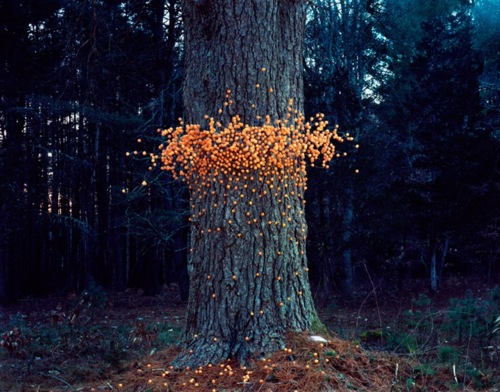 Cheese Balls, 2012 from the series Emergent Behavior
Cheese Balls, 2012 from the series Emergent Behavior
The familiarity of some materials and ambiguity of other, creates an inquisitive tension. A tension of peculiarities, in an off kilter relationship between the natural and the artificial construction. Assorted foliage, 2012 from the series Emergent Behavior
Assorted foliage, 2012 from the series Emergent Behavior
Like kinetic ghosts, consequence seems evident after the pause of each captured moment. Apprehension also arises from the idea of the aftermath, the fall of a tree, or the dissipation of a million air born plastic cups, Emergent Behavior resonates on multiple levels, in its strangely curious dialogue of opposites.
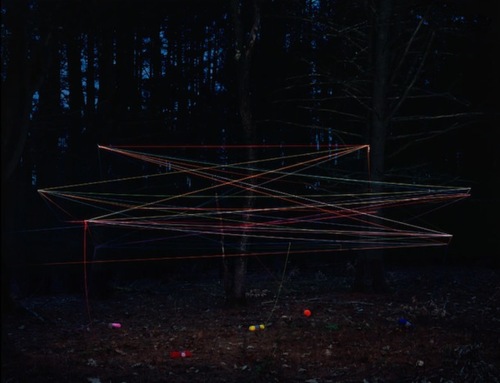 Yarn #1, 2012 from the series Emergent Behavior
Yarn #1, 2012 from the series Emergent Behavior
Thematically, Thomas seems inherently drawn to these contrasts in the world. In The Robot Series, elements of literature, science fiction, and motifs from mid evil tapestries, are used to create a narrative of a lone Robots plight to co-exist with the natural world.
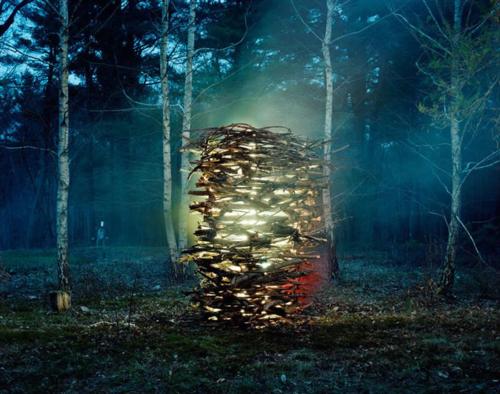 Robot Coda series, 2011
Robot Coda series, 2011
From the series, Thomas constructed a book to house the story. Acting as an artifact to the world he’d made, the book is an organic collaboration of images, illustration, salvaged wood, and metal. It is an homage to “an inscrutable relic long lost in an apocryphal future.”
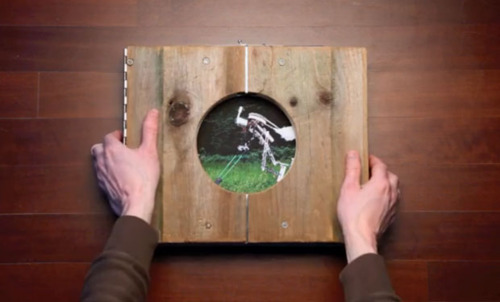 The Robot Book, 2011
The Robot Book, 2011
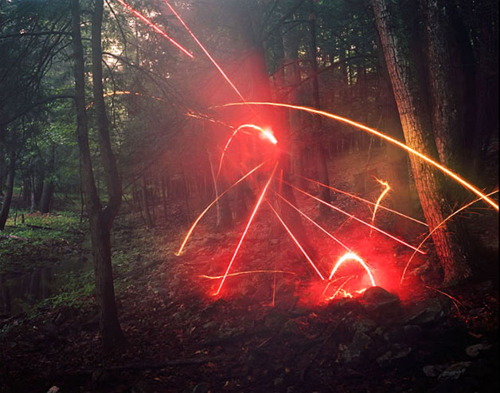 Robot Coda series, 2011
Robot Coda series, 2011
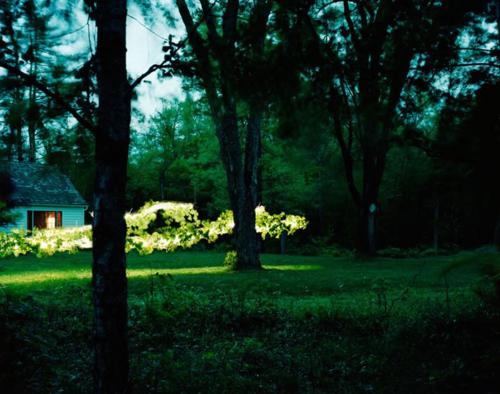 Robot Coda series, 2011
Robot Coda series, 2011
In hesitation to define himself as an experimental visual artist, Thomas utilizes various formulas to manifest his ideas. With the construction of precarious materiel’s, prediction, or lack thereof, is part of the process. In dialogue with the natural world, Thomas builds from the willingness to let go of a self imposed structure. His visual vocabulary highlights the poetic order inherently in place around us.
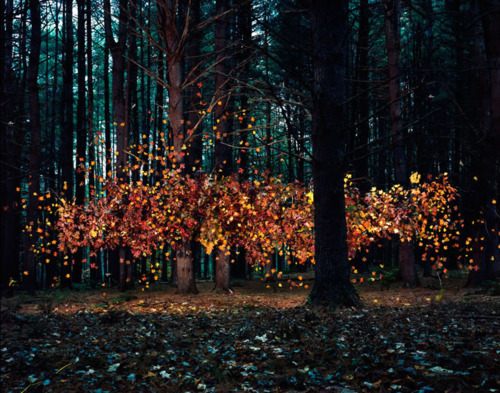 Leaves #1, 2012 from the series Emergent Behavior
Leaves #1, 2012 from the series Emergent Behavior
Like the flock of swifts, the behavior of over 5,000 birds to fly together as one emerges from the desire of the individual birds to avoid collisions while staying close to their neighbor. Nature will always find a way.
Thomas Jackson is a self-taught photographer, who lives in Brooklyn with his wife, daughter and two goldfish, Marty and Marty. His work has been shown at Central Booking in DUMBO, Brooklyn, the Minnesota Center for Book Arts, Vamp and Tramp Booksellers, The Center for Books Arts and the Governors Island Art Fair.
 Nebulae
Nebulae
To see more of Thomas Jackson go here: { www.thomasjacksonphotography.com }
23 Apr 2012 / 4 notes / Wanderlust Aubrey Hays Thomas Jackson
Wanderlust Presents: Evgenia Arbugaeva
Hello Evgenia Arbugaeva,
“Once upon a time in Siberia, on the shores of the Arctic Ocean, in a warm bed in a small town, a little girl woke up from a dream. It was morning, but it was still dark out, for the little town was so far North that the sun would not show itself for many months. They called this the Polar Night.”
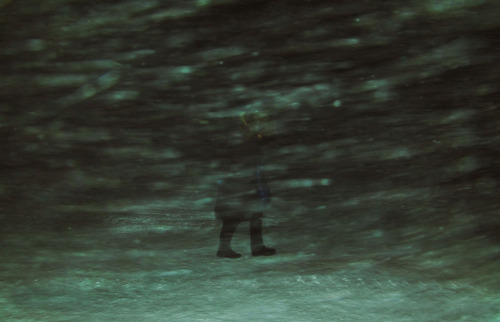 Tiksi, 2011
Tiksi, 2011
Growing up on Siberia’s Arctic coastline, Evgenia Arbugaeva’s series Tiksi, is a nostalgic recollection of a vanishing childhood. After the fall of the USSR, Evgenia’s family along with many others, boarded up the windows of their homes and left for the possibility of more. Tiksi was a childhood filled with a theatrically temperate landscapes, white-out winters with undefined horizons, and an aurora borealis prone night sky. The scenery, palette, and moments of pure imagination made a lasting impression on Evgenia.
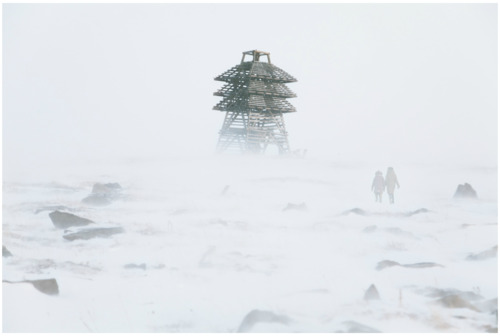 Tiksi, 2011
Tiksi, 2011
18 years later she returned to photograph her childhood home. It was a voyage of nostalgia, to recapture the mythical perceptions from memories hinging on fiction. Unfortunately Tiksi was now nearly a abandoned after grave economic decline, and Evgenia struggled with manifesting the past. Returning to New York, she found only one photo captured that fleeting romanticism -a picture taken behind a young girl tossing stones.
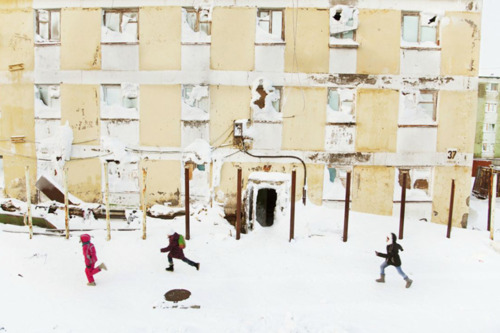 Tiksi, 2011
Tiksi, 2011
Three months later, Evgenia returned, found the girl, Tanya, and started photographing her. An instant bond was formed over a Jacque Cousteau fascination for exploration, as Tanya dons a red cap in homage to the French pioneer.
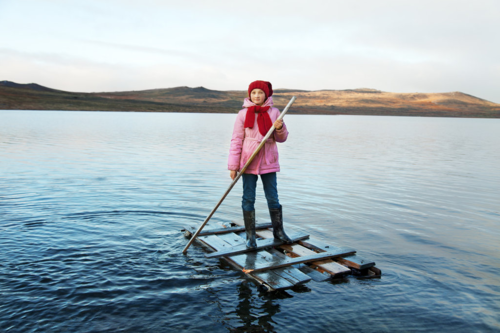 Tiksi, 2011
Tiksi, 2011
Evgenia followed and documented her through sea and tundra, cohorts in a fascination and adventure. Highlighting the extraordinary in the ordinary life of a young girl, Evgenia’s own construction of memories were recalled once again.
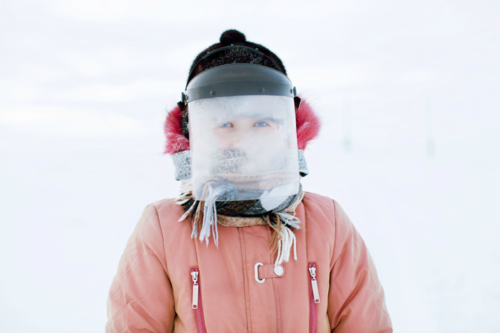 Tiksi, 2011
Tiksi, 2011
There is an inherent relatability to Evgenia’s process as an image maker. Like many, we are also collectors and archivers of memories. Photography acts as an anchor to these uncanny moments that strongly imprint on us. Like Evgenia, this insatiable curiosity for the world may never subside…nor should it.
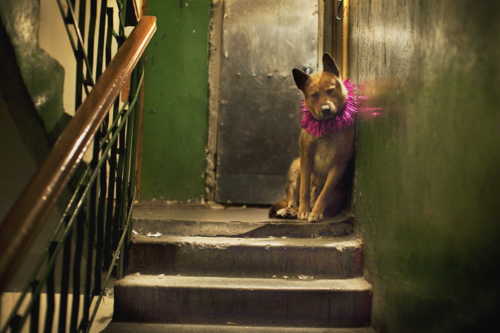 Tiksi, 2011
Tiksi, 2011
It is the possibility of things unexplainable, yet still possible that drives us to make images.
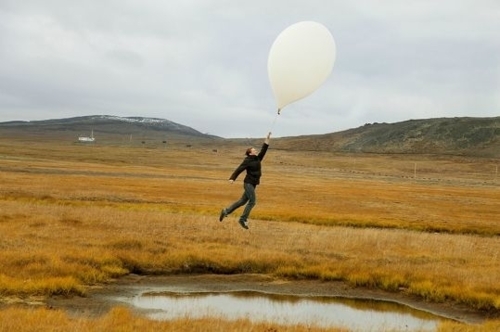 Tiksi, 2011
Tiksi, 2011
This past fall, Tanya’s family, like Evgenia’s left Tiksi. Hope for a better future has driven many families to move away. The story and series of Tiksi, much like that of both girls, has now become a memento. Frozen in time, it is a cathartic ode to a disappearing town by the cold sea.
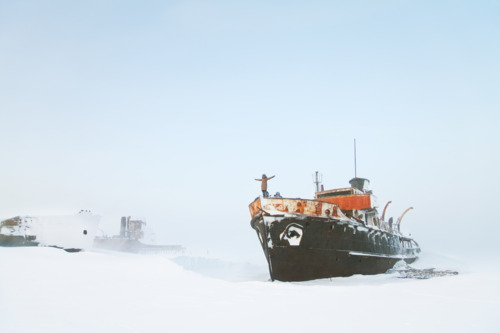 Tiksi, 2011
Tiksi, 2011
“Tanya, her sister Olga, and I at the abandoned TV antenna just a little outside of the town. This is a very cold and quiet night, so quiet that our crunchy steps on the snow feel like an intervention. We try to keep our voices low, as though we are afraid to wake somebody up.
Tanya whispered: ”Look, I think Aurora Borealis is about to appear on the sky… shhhhh…here it comes.”
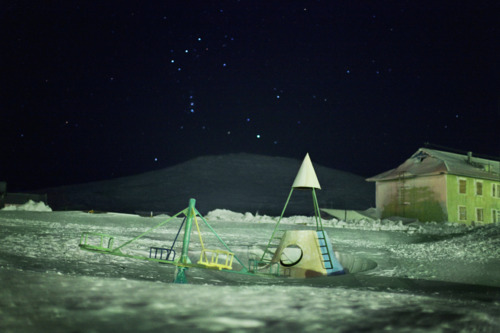 Tiksi, 2011
Tiksi, 2011
Evgenia studied at the Moscow Academy of Photography as well as the International Center of Photography in NYC. She now works as a freelance photographer between Russia and New York.
 Tiksi, 2011
Tiksi, 2011
To see more of Evgenia Arbugaeva go here: { www.evgeniaarbugaeva.com }
16 Apr 2012 / 5 notes / Wanderlust Aubrey Hays Evgenia Arbugaeva
Wanderlust Presents: Laura Plageman
Hello Laura Plageman,
There is a precious physicality to the photographs Laura Plageman constructs. Wavering between image and object, her recent series Response, engages the sculptural materiality of image-making.
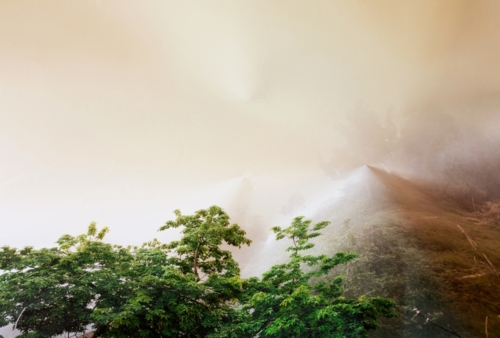 Trees and Fog, California 2011 from the series Response
Trees and Fog, California 2011 from the series Response
Starting with the photographic print, Laura folds, bends, and creases the image into a sculptural metamorphosis of subtle manipulation. The evidence of this process holds a stark sentiment, like the folds of an old love letter turned over and over in the hand of the recipient.
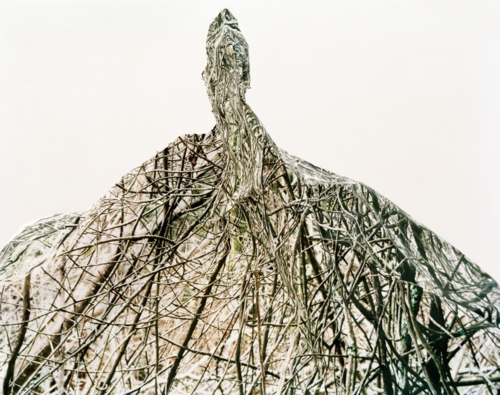 Thicket, 2006 from the series Response
Thicket, 2006 from the series Response
Out of intrinsic artistic frustration, Response, was born. While in her studio, Laura found herself at struggle with the direction of a new image, so she pulled it from the wall and began re-working it as a still life. The dimensional possibilities of these reformed landscape give new life to an already rich image. The rolling green hills form an animated line of blooming teeth.
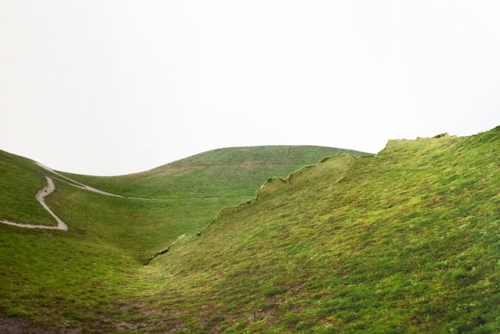 Green Hill Washington, 2010 from the series Response
Green Hill Washington, 2010 from the series Response
Or the bursting vines of a Kudzu plume, turn to a cyclone of three dimensional movement.
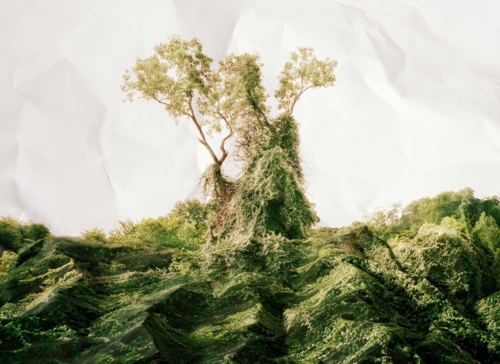 Kudzu, Texas 2010 from the series Response
Kudzu, Texas 2010 from the series Response
The series Response, speaks to Laura’s fascination for such densely aggressive landscapes, and the psychological impact they can have on people. More so, when infiltrated or disrupted by the effects of human contact, Response, holds environmental undertones.
Referencing the invasive species Kudzu, while visually lush, the dark contrast of its beauty lies in the invasiveness of its species. Growing up to a foot a day, its dense blanket smothers everything in its path with a heavy shade. Response reminds me of a stance from a poem by writer Beth Ann Fennelly:
Kudzu sees a field of cotton,
wants to be its better half.
Pities the red clay, leaps across
the color wheel to tourniquet.
Sees every glass half full,
pours itself in. Then over the brim.
Scribbles in every margin
with its green highlighter. Is begging
to be measured. Is pleased
to make acquaintance with
your garden, which it is pleased to name
Place Where I Am Not.
Yet. Breeds its own welcome mat.
Like Kudzu, Laura work draws from an almost somber beauty of such stark contrasts. There are remnants of something more in her photographs, seen in the subtle clues and gestures of melancholic attraction.
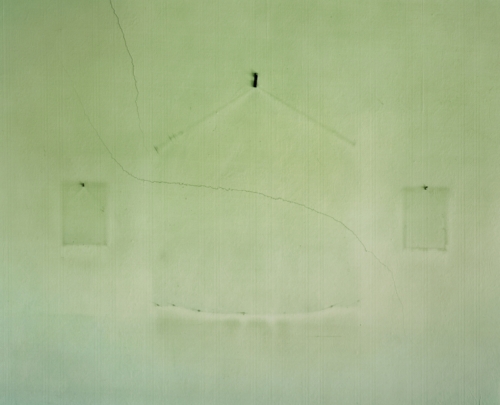 Green Wall, 2006 from the series In-Between Places
Green Wall, 2006 from the series In-Between Places
The formal qualities of some images, paired with the slightness of manipulation in other others, resonate with a sense of mystery. Each landscape is approached with the same sincerity for contact with the natural world. Be it a tactile need to interact with the image once its created, or more so in the decisive moment, Laura is writing her own the rules.
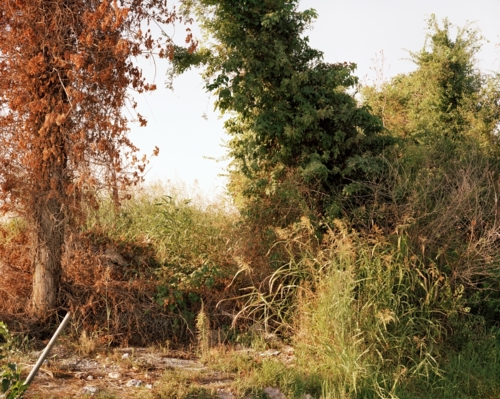 Telephone Poll, 2006 from the series In-Between Places
Telephone Poll, 2006 from the series In-Between Places
Her photographic process involves both traditional and digital tactics. Shooting mainly large format, physically altering, and then printing digitally for pliability, Laura considers experimentation’s invaluable to the process. She received her MFA from the California College of the Arts and now lives and teaches in Oakland.
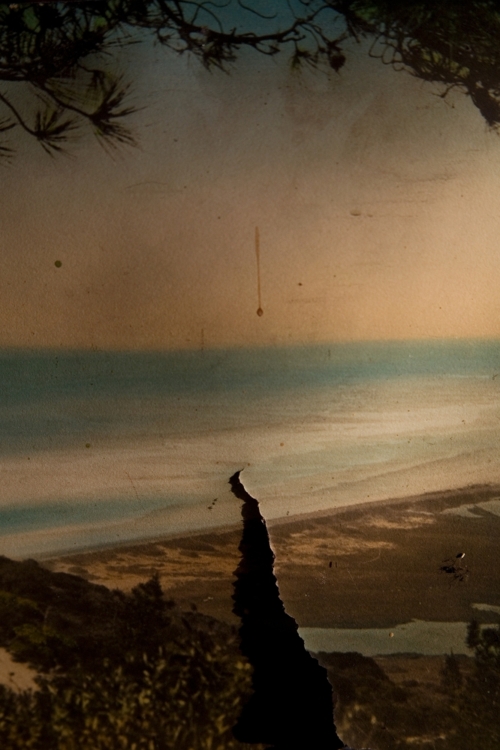 Vista 2008, from the series N Scale
Vista 2008, from the series N Scale
To see more of Laura Plageman go here: { www.photolp.com }
9 Apr 2012 / 2 notes / Aubrey Hays Laura Plageman Wanderlust
Wanderlust Presents: Riitta Ikonen
Hello Riitta Ikonen,
The translation of photography, as well as its aesthetic potential, is forever evolving. Redefined in new practices and concepts, the threshold of photographic ideology has expanded to reveal fresh new curiosities. In short, photography wears many hats as does visual artist Riitta Ikonen.
From the eastern forests of Finland, Riitta Ikonen’s work is concerned with the performance of images through photography and costume design. With a keen sensibility for collaboration, her practice is defined by the cross pollination of many mediums.
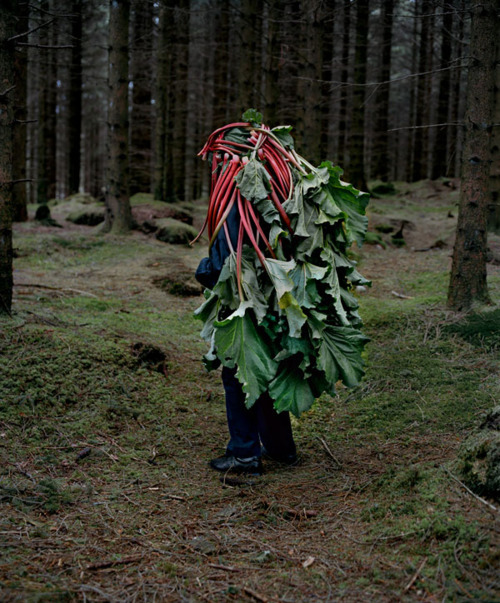 from the series Eyes as Big as Plates, 2011
from the series Eyes as Big as Plates, 2011
With a MA in Communication and Design from the Royal College of Art, Riitta’s involvement in a myriad of creative ventures include a commission by the London 2012 Festival, an installation at the TATE Britain, and developing concepts for the The Olympic Delivery Authority venue.
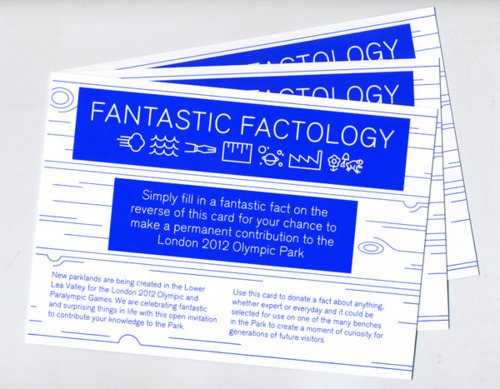 for the London 2012 Olympic Park
for the London 2012 Olympic Park
Conceptually wistful and rich, Riitta thematically explores perceptions of space, identity, and conservation, maintaining that her “hands hold the most decision making power.”
In the recent series Eyes as Big as Plates, Riitta explores the timeless romantics of folklore. In collaboration with Norwegian Artist Karoline Hjorth, the project was created during a residency at the KINOKINO Centre for Art and Film in Norway.
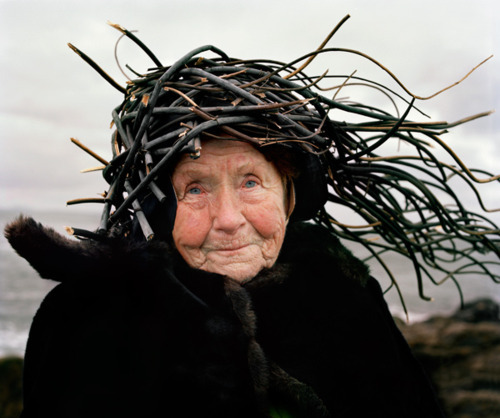 from the series Eyes as Big as Plates, 2011
from the series Eyes as Big as Plates, 2011
Travelling across the countryside, Riitta implored the participation of local senior heroes, sailors, farmers, artisans, and 90-year old parachuters as her subjects. Eyes as Big as Plates explores a sense of timeless universality for storytelling. The collaborative symbolization of the series, is a graceful gesture to the communal language of imagination.
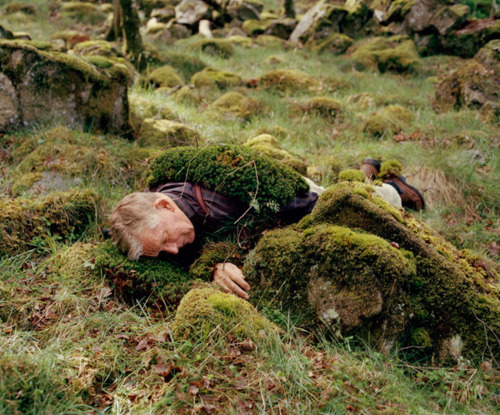 from the series Eyes as Big as Plates, 2011
from the series Eyes as Big as Plates, 2011
The strength of Riitta’s process lies in the inherent construction of each scene as it unfolds before you. With the slightness of a deadpan humor, her work is relentlessly sincere, and theatrically ironic.
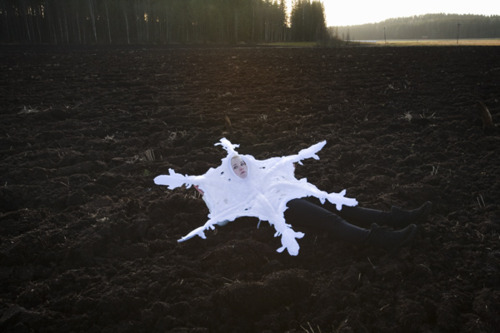 20th December 2007 Valkeala, Finland from the series Snowflake
20th December 2007 Valkeala, Finland from the series Snowflake
As seen in the series Snowflake, a response to global warming in Finland. Ritta places herself against a starkly barren landscape in gesture to a disappearing winter. Many of Riitta’s projects aim to communicate messages of conservation and environmental wistfulness.
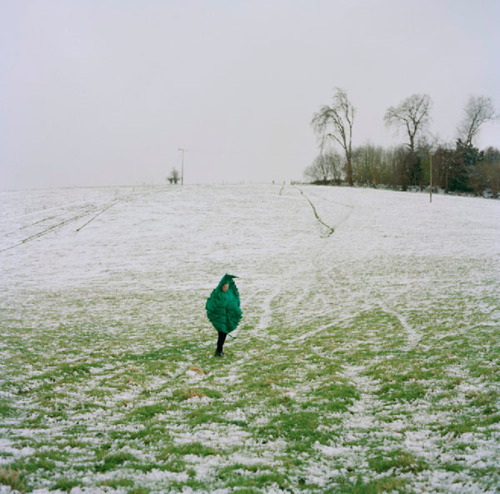 from the series Bird & Leaf.
from the series Bird & Leaf.
In the series Bird & Leaf, Riitta assumes the characters of both Bird and Leaf, exploring the sentimental yearning for nature, and its impermanence. Bringing fourth the question “can we ever really get back to nature?”
In a illustrative approach and homage to artist Miranda July’s book, No One Belongs Here More Than You, Riitta assimilated a poetically empathetic response to the text.
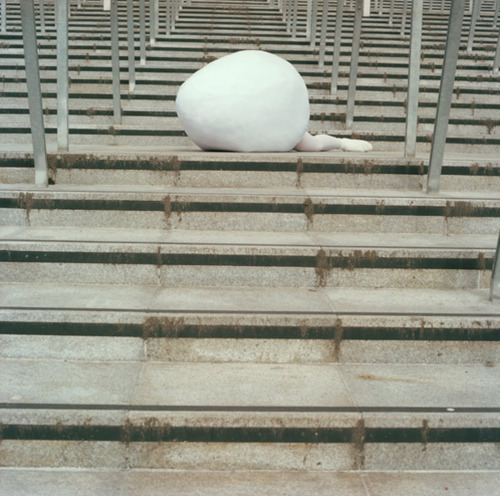 “I called out to my own heart, as if she were within me like an egg,” 2008 from the series No One Belongs Here More Than You
“I called out to my own heart, as if she were within me like an egg,” 2008 from the series No One Belongs Here More Than You
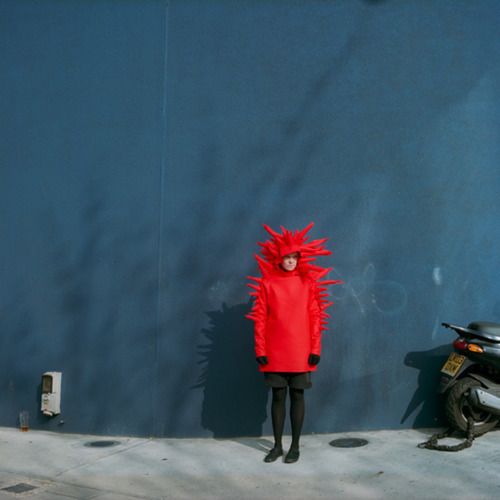 “My unexpressed anger at nothing in particular. And: The feeling that there is a next level and I should be on it.” from the series No One Belongs Here More Than You
“My unexpressed anger at nothing in particular. And: The feeling that there is a next level and I should be on it.” from the series No One Belongs Here More Than You
In the series Mail Art, an ongoing project between Riitta and her tutor Margaret Huber, one postcard per week was to be sent as a document of experiences.
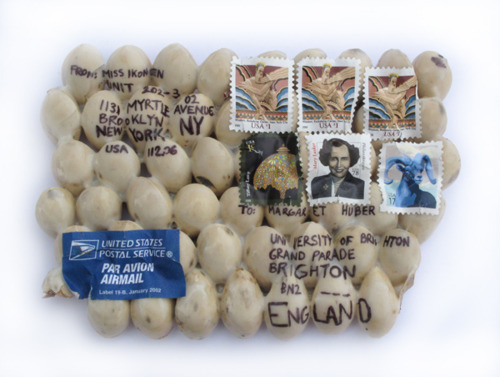 Chinatown Seeds, 2004-ongoing from the series Mail Art
Chinatown Seeds, 2004-ongoing from the series Mail Art
Since its start in 2004, over 150 postcards have been sent from all over the world, including fishing line and hooks, pens from Brooklyn rooftops, hair, wood from Fragrance Lake, WA, moss, and Chinatown seeds.
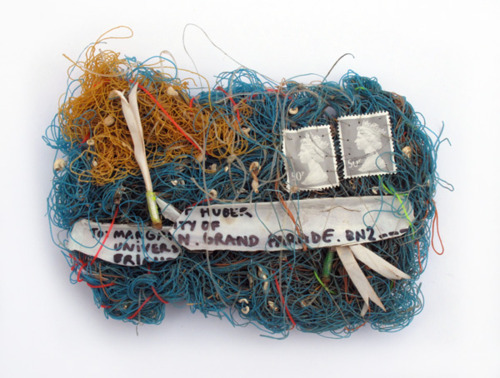 Found fishing line and hooks, 2004-ongoing from the series Mail Art
Found fishing line and hooks, 2004-ongoing from the series Mail Art
With an an inherent adoration for fabric and fables, the works is created from a tenacious a visual intuition. In her constant search for unpredictable mediums, be it sculpture, design, or photography, Riitta Ikonen indeed wears many hats…some she inevitably makes.
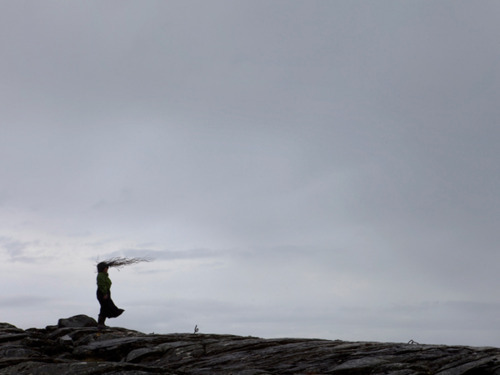 from the series Eyes as Big as Plates, 2011
from the series Eyes as Big as Plates, 2011
When asked to define her own title as an artist, like her work, Riitta’s reply is both playful but decidedly honest:
“People sometimes add a little something to my ‘artist’ title to make it more poignant. ‘Artist-designer’ has been around a few times. Illustrator is a nice title too. Illuminator - like Terminator with enlightening powers. I tell myself no one is going to care what you
call yourself if the work is good.”
To see more of Riitta Ikonen go here: {www.riittaikonen.com}
2 Apr 2012 / 1 note / Aubrey Hays Riitta Ikonen Wanderlust
Wanderlust Presents: Brendan George Ko
Each week, Aubrey Hays scours the globe in search of photographers who challenge and embrace visual language in new ways. Her posts feature those hidden gems of photography from near, far, here, and there, and push us to think, question, and wander farther.
Hello Brendan George Ko,
I am totally smitten with Brendan Georg Ko. I’m also pretty sure he is, in fact, a ghost. When I discovered Ko’s work, I immediately had an overwhelming sense of nostalgia. I felt as though these images were made just for me, and that they were pulled from a deep seeded place of personal history. The ephemeral tones of Ko’s photographs speak to the tenacious romantics, to the fabulists, to the haunters, and the haunted.
Currently based in Toronto, Ko received his BFA in Photography from Ontario College of Art & Design. With half a heart permanently dwelling in the Southwest, the poetics of Ko’s formative years are thematically apparent in a great deal of his work.
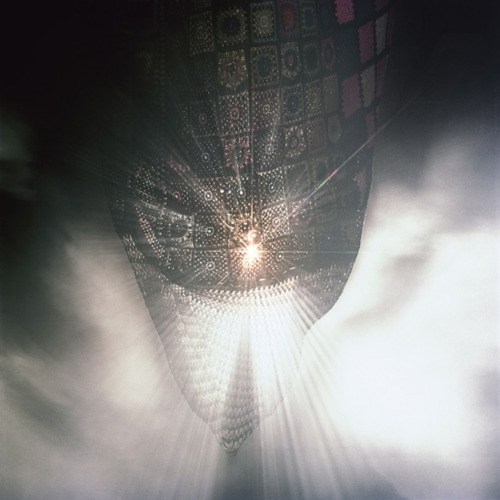 Carlsbad, 2010-2012 from the series The Barking Wall
Carlsbad, 2010-2012 from the series The Barking Wall
Each of his series is met by a lyrical, sometimes fragmented personal account, a stream of consciousness, and an invitation into a world where Ko dwells.
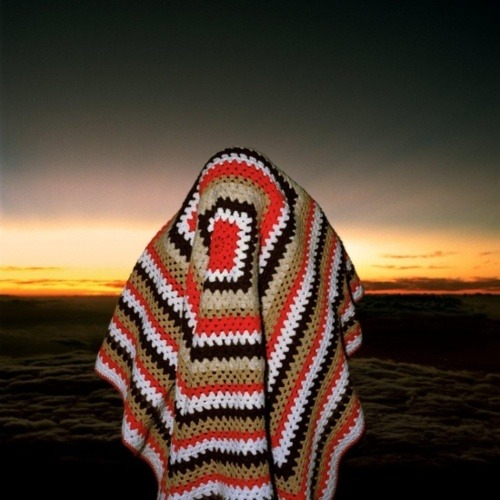
Wondergeist, 2010-2012 from the series The Barking Wall
About to embark on his first solo show this month, Ko will unveil Atmospheres at the Toronto based Angell Gallery. Spanning years of creation, the considerable exhibition holds three bodies of work,rooted in the past, present, and future.
The Barking Wall series, included in Atmospheres, has received admiring attention from both Jen Beckman’s Hey Hot Shot, as well as through international publication and exhibition with the Canadian based charitable arts publishing house The Magenta Foundation.
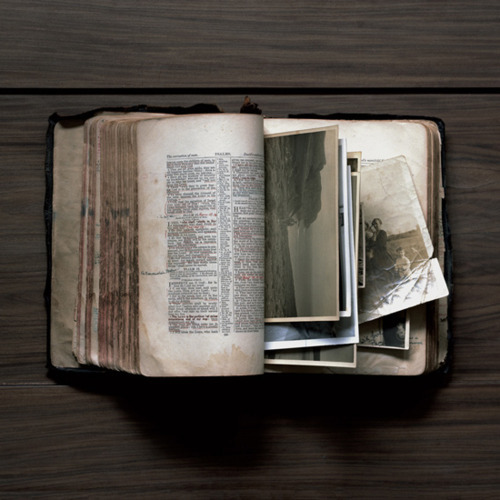
Doreen’s Bible, 2010-2012 from the series The Barking Wall
The Barking Wall serves as a treasury of visualized cognizance, of lived experience, and of extended history. It represents an anchor for Ko’s wavering conflictions with growing up and belonging:
“I remember as a kid I used to cover my face with my hands, and peek at the world through my fingers. I could see the world, but the world couldn’t see me. Nowadays I find myself assimilating with the hybrid, a creature I share a betwixt nature with, for we are both between two worlds, having multiple origins, and demand our own realm, such as a gothic castle, a tomb, or limbo to serve as a haven.”
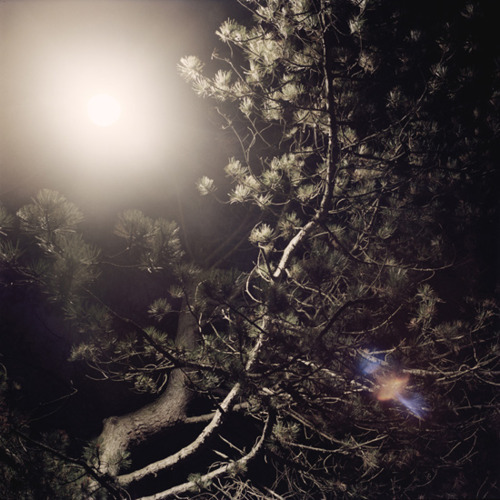 November 25th, Sphere, 2009-2010 from the series Nocturne
November 25th, Sphere, 2009-2010 from the series Nocturne
Nocturne represents Ko’s past as a memorandum to a particular sense of mystery from a childhood spent in in New Mexico—a place with legends, land, and a mapping of Ko’s photographic beginnings. The final installment in Atmospheres is We Soon Be Night!
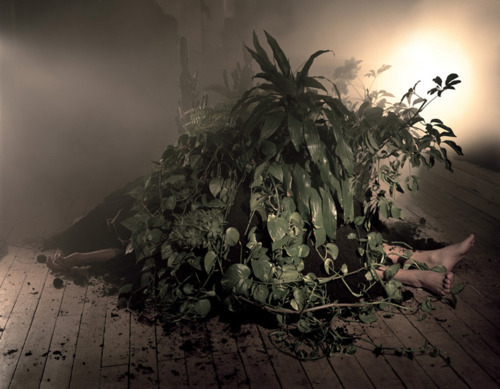
Untitled Dump, 2011- from the series We Soon Be Nigh!
Renascent of the now, it depicts a semi-apocalyptic disbelief of what we’ve gone through and what comes after. The chilling series is also a foreboding intimation of where we are today. Like most of Ko’s work, Atmospheres presents a melancholic ode to a constant state of change, and the will to adapt and move through it.
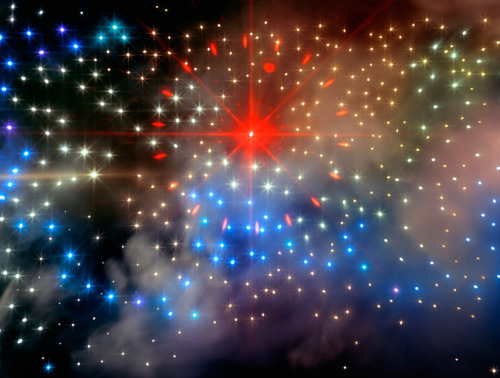 ΩMEGA,2011-2012, from the series We Soon Be Nigh!
ΩMEGA,2011-2012, from the series We Soon Be Nigh!
Ko haunts us with poetic representations of what will remain seen and unseen. Where the photographs pause, his fluid words take heed. I highly recommend checking out his personal blog photo-ma-graphy. It offers visuals wedded to the tuneful conversations of a storyteller:
“My story is about trying to speak with my hands. Put a camera in front of them and I’ll show you the places I’ve been to, put a typewriter in front of me and I’ll tell you the people I have known, put a drum in front of me and I’ll beat the rhythm of my heart. Over and over, until there is nothing left.”

Phantom (Jorge The Wanderer), 2010-2012 from the series The Barking Wall
To see more of Brendan George Ko go here: { www.brendangeorgeko.com }
26 Mar 2012 / 1 note / Wanderlust Brendan George Ko Aubrey Hays
Wanderlust Presents: Jason Gowans
Each week, Aubrey Hays will scour the globe in search of photographers who challenge and embrace visual language in new ways. Her posts will feature those hidden gems of photography from near, far, here, and there, and push us to think, question, and wander farther. Welcome to Wanderlust!
Hello Jason Gowans,
Falling down the rabbit hole of my ever-expanding blog bookmarks, I somehow stumbled upon photographer Jason Gowans and I had to stop, rather abruptly, and explore further. What I discovered was an insightful and humanistic body of work laden with both nostalgic and social commentary.

“I’m doing everything I’ve always wanted, all the time, everyday.” 2011
Growing up in Chilliwack British Columbia, Jason completed his BFA at Concordia University in 2010, and now lives and works in Vancouver. With a strong presence in San Francisco as both an exhibiting artist, creative collaborator, and curator, Jason’s practice evokes a strong sense of community. Most recently, he produced a show entitled Alternorthern, featuring nine emerging Canadian artists at a Gallery in San Francisco. Alternorthern also included a full color publication authored by Jason in collaboration with the artists involved. To see more of the exhibition go here where you can also download a nice pdf on the work and participants.
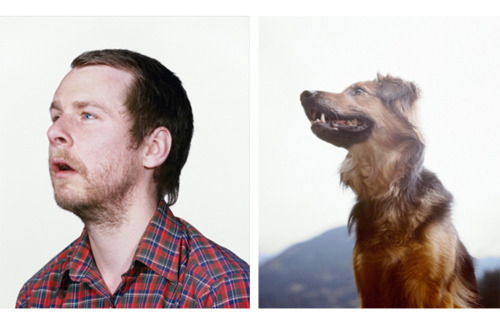
I’m doing everything I’ve always wanted, all the time, everyday, is Jason’s most recent series of work. Presented as a large scale photographic installation, the images reflect on Jason’s investigation into idealized imagery within or about landscape.
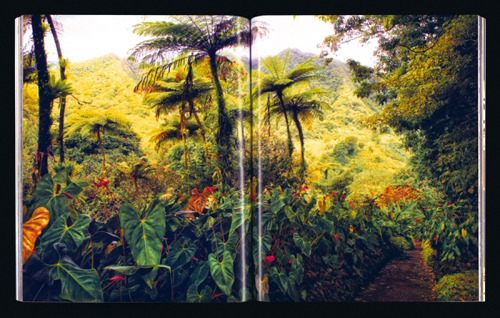
Two thematic currents run through this body of work in dueling opposition. First, the glorification of an individual within a distinctly lustrous, landscape. Second, the fabrication of this idealized, and perhaps disappearing landscape. Jason explores the constructs of his own romanticism and personal nostalgia in the presentation of a packaged arcadian iconography.
Constructed or not, His smart and intuitive images evoke our romanticized notion of land. I am compelled by Jason’s candor in expressing the widespread fascination with “the last frontier,” as well as his commentary on our personal conception and individual experience of nature. The wildness intimated by the lands true capabilities is replaced by a depiction that draws on our contemporary tendency to understand nature as something domestic. Perhaps we are cowboys no longer.

The common thread in all of Jason’s work is that of an earnest and at times humorous approach to the visual playing field of photography and aesthetic experience.
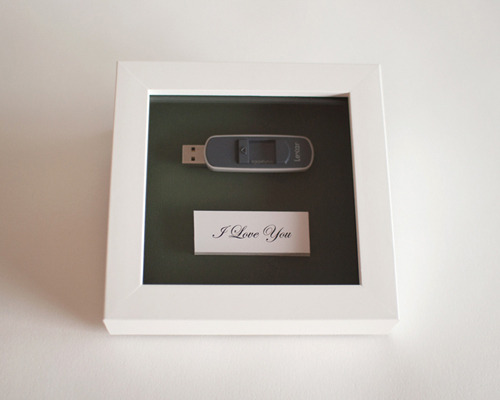
Love Letter
To see more of Jason Gowans go here: www.jasongowans.com
19 Mar 2012 / 10 notes / Wanderlust Aubrey Hays Jason Gowans

